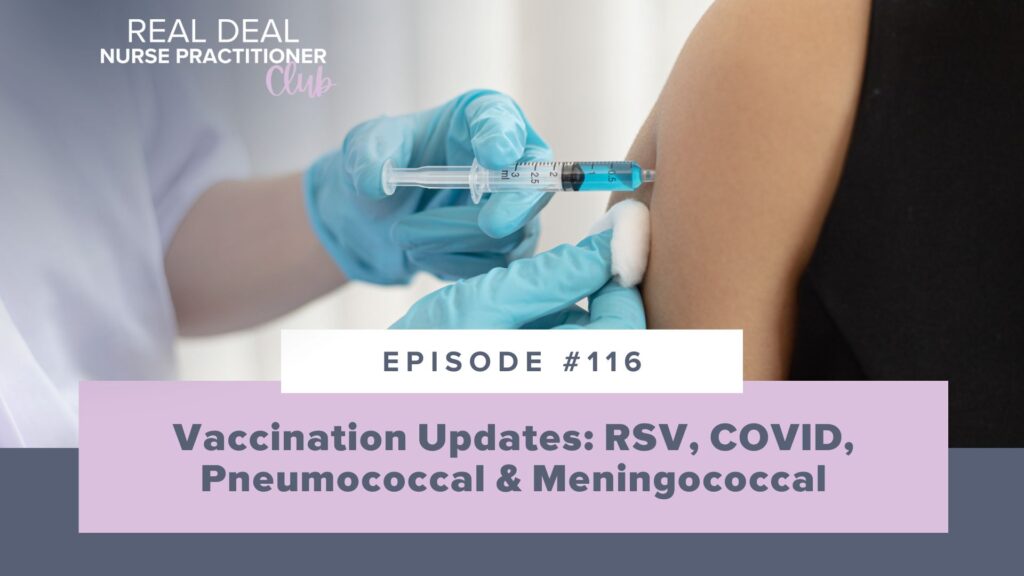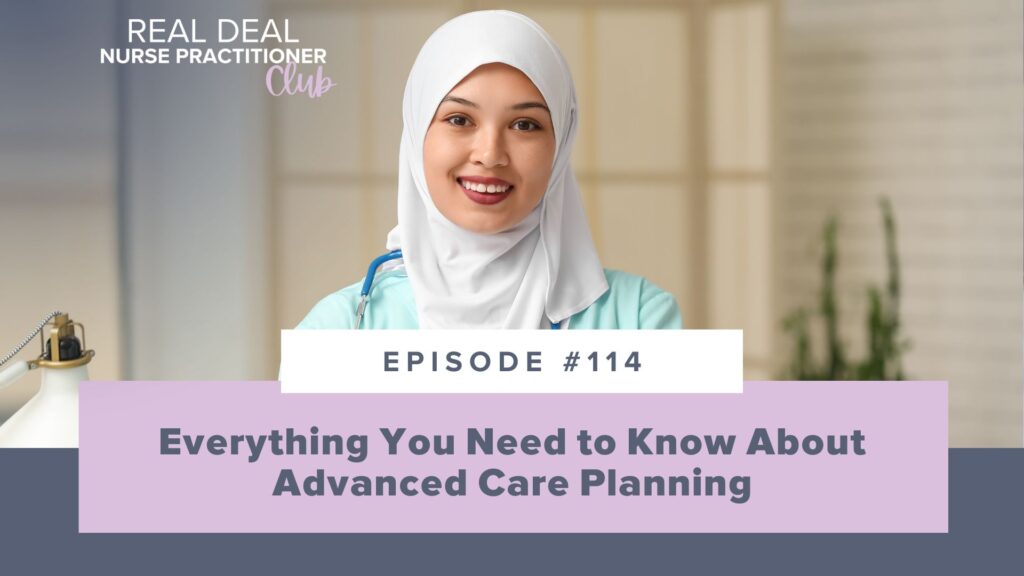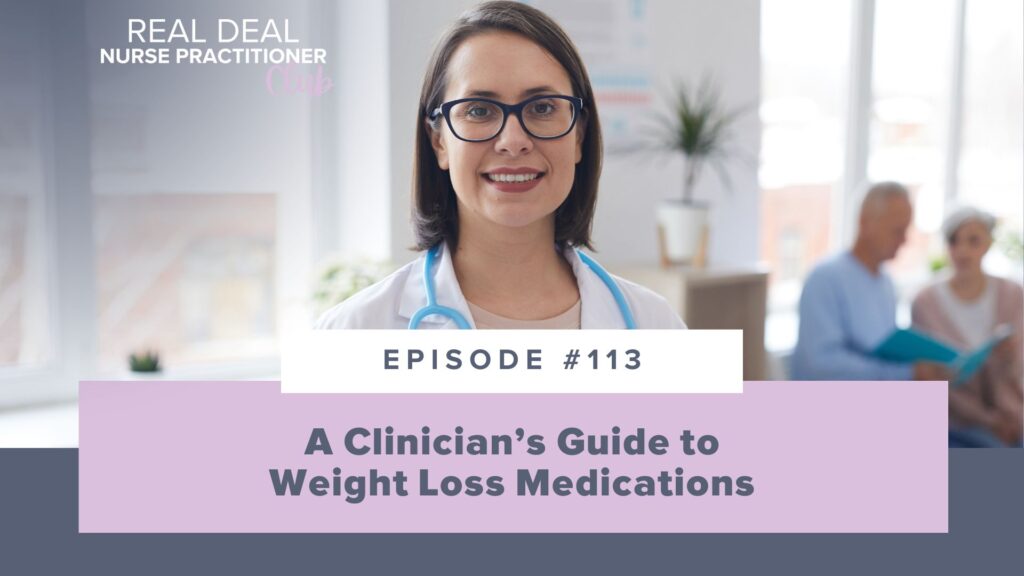Episode #115: LGBTQIA+ Principles in Healthcare
- by Sarah Michelle
- Jun 12, 2024
- Podcasts
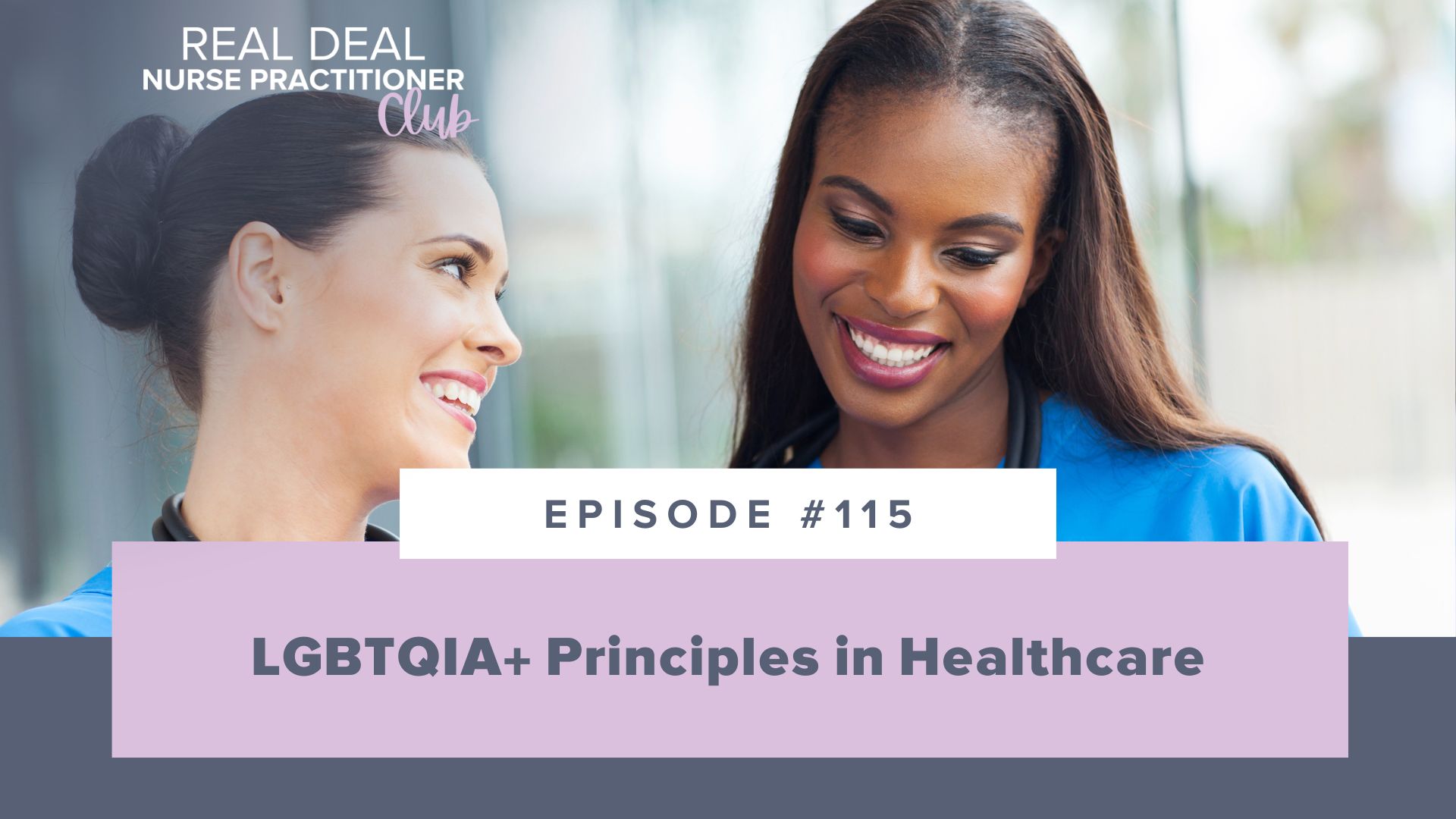
In honor of Pride Month this June, Anna is here this week to talk about inclusivity and how to exemplify that for the LGBTQIA+ community in healthcare.
To highlight the need for today’s episode, the LGBTQIA+ community is twice as likely to report discrimination by a healthcare provider than non-LGBTQIA+ people, among other chronic stressors that lead to stigmatization. As real-deal NPs, you want all patients to feel welcome and safe, and in this episode, Anna is offering ideas for how you can create an inclusive healthcare environment.
Tune in this week to learn the main pillars of LGBTQIA+ healthcare and some important terms and distinctions in terminology. Anna is sharing some of the disparities the LGBTQIA+ community faces in healthcare, and her top tips for becoming a more inclusive clinician.
What You Will Discover:
- A review of terminology and ethical principles in healthcare.
- The disparities in healthcare that the LGBTQIA+ community faces.
- How to create an inclusive environment in healthcare.
Featured on the Show
- Follow me on: Facebook | Instagram | YouTube | TikTok
- Follow us on TikTok and YouTube!
- Read more about the Minority stress theory
- Kaiser Family Foundation
- National LGBTQIA+ Health Education Center
Full Episode Transcript:

Welcome to the Real Deal NP Club. Whether you’re hoping to become a real deal nurse practitioner or you already are one, this is the place for you to get the resources you need as you tackle this massive transition into practice. We’re your hosts, Sarah Michelle, Chief Nursing Officer of Blueprint Test Prep, and Anna Miller, Director of Nursing Content. And we’re here to hang out with you each week like your best friends in the NP space. Let’s dive in.
Anna: Hey everyone, it’s Anna. We’ve done a few episodes recently on some different topics about improving patient interactions, really moving beyond that clinical decision making that you learned about in school and starting to dive into what kind of clinician you want to be. So in honor of Pride Month I want to briefly talk about inclusivity and how to exemplify that with the LGBTQIA community.
Now, this episode is going to be short and it is not going to cover all of the things that I wish I could, but I just want to get you started. There’s so much we could talk about but we are just going to focus on a review of terminology and ethical principles and go over a few of the disparities in healthcare that LGBTQ individuals face. And then we’ll discuss just some simple ways that you can start today on how to create an inclusive environment in healthcare.
As real deal NPs, you should want all patients to feel welcome and safe. And we’ve got some advice on how to do just that, so let’s get started. So to start, let’s do a brief review of some guiding ethical principles in healthcare, like beneficence, autonomy, non-maleficence, and justice. All those terms that you probably learned about while studying for your board exam.
Beneficence is acting in the best interest of the patient, while non-maleficence means to do no harm. Moving to autonomy, that describes the patient’s ability to make their own decisions. While we want to act with beneficence, or in the best interest of the patient, we also need to respect that it is ultimately the patient’s decision about how they want to treat their body and their health.
Lastly, justice refers to the equitable and fair treatment of patients. So that means whether patients have private or public insurance or no insurance, or are primarily non-English speaking, or they’re young or they’re old, they all deserve access to good healthcare.
And I think it’s easy to see how all of those ethical principles work together to make sure patients are treated fairly and with respect. And it will become even more clear when we get to healthcare disparities in the LGBTQ community.
So with that, let’s do a brief review of some terms related to LGBTQ healthcare. First, we need to go over the difference between gender and sex. Sex is biological. It is based on chromosomes and reproductive organs that are present in most cases. Gender, on the other hand, is the expression of that. It’s based on cultural norms, but also the individual’s preference to present as male, female, or androgynous.
Because of the differences in sex and gender, someone can be gender fluid or non-confirming and express themselves in ways that move between those traditional masculine and feminine norms. Or someone can be transgender, meaning they identify as a gender that differs from their sex assigned at birth.
Now, what do you think about sexual orientation? Because yes, besides sex and gender differences, there are differences in sexual orientation and preference that people experience. Sexual orientation is essentially about what gender you are physically and emotionally attracted to. And like how gender expression can be on a spectrum, there’s also a wide range of possibilities with sexual orientation.
Heterosexual people are attracted to the opposite sex, and homosexual people are attracted to individuals of the same sex. And then we have even more terms that you might be less familiar with, like bisexual, pansexual, and asexual.
Bisexual and pansexual are sometimes confused for the same thing, but bisexual individuals are attracted to more than one gender, where pansexual individuals are attracted to people regardless of their gender. This is an important distinction. And then asexual refers to individuals who do not feel any sexual attraction to others.
Okay, now that we have a little bit more background on those important terms, we need to talk about the healthcare disparities that LGBTQ individuals face. For example, they have higher rates of mental health issues and suicide, especially LGBTQ youth.
Have you heard of the minority stress theory? The minority stress theory poses that minority groups, including sexual and gender minority groups, experience chronic stressors in society, leading to stigmatization. The stigma associated with their LGBTQ identity contributes to mental health issues and other health disparities.
And some examples of chronic stressors are discrimination with housing, job opportunities, being political targets, and not being a part of a heteronormative culture. That constant pushback from these individuals’ environment can certainly lead to chronic stress response.
From a report with the Kaiser Family Foundation, other notable healthcare disparities for LGBTQ individuals are that LGBTQ people are managing chronic conditions and disabilities at higher rates than non-LGBTQ people. Also, two-thirds, or 67%, of LGBTQ people reported needing a mental health service over the past two years compared to 4 in 10, so 39% of non-LGBTQ people.
And to highlight the need for this episode today, LGBTQ people are twice as likely to report discrimination by a healthcare provider than non-LGBTQ people. The way that we want to walk through creating an inclusive healthcare environment and really move towards overcoming those barriers and disparities is to start from the very beginning of the patient visit.
I want you to visualize the office that you work in now, or maybe you’re doing clinical hours at, or even just your own regular healthcare office that you visit. What do you see? Think about when you first walk in, what kind of signage is there? Are there pictures on the wall? What kinds of brochures are in the waiting room? Would those things be welcoming and supportive of LGBTQ individuals, or do they potentiate heteronormative culture?
And when you greet the secretary at the check-in counter, how are you addressed? Are you asked your preferred name and pronouns? After that, when you are filling out forms, look at how the questions are asked. Are there only two options for gender or sexual orientation? And what are the options to list for married, single, or do you have a partner? So before a patient even sees a clinician, they could feel unwelcome and discriminated against.
And now we have to think, once the patient comes in to see us, how can we be supportive and inclusive? First, all clinicians and staff should have training in the healthcare of LGBTQ individuals. The National LGBTQIA, with a plus sign for others, Health Education Center through the Fenway Institute is a great place to start on training resources.
And then, once we’re with our patients, we need to think with an open mind and speak with respect. We cannot make assumptions based on stereotypes. And we need to be comfortable speaking about sexual history and orientation. And all of this comes with practice.
There are going to be times where you mess up pronouns. Or maybe you ask a question in an unintentionally negative way. But you need to be open and honest with yourself and your patient. If they correct you, thank them for correcting you and move on.
At the end of the day, it is all about respect for the patient and building that rapport. Like we said at the beginning of this episode, this is such a big topic that I could talk about for a whole lot longer. But I think we covered some of just the main beginning pillars of LGBTQ healthcare. And I hope I got you thinking about ways that you can be a more inclusive clinician.
When you think about minority stress theory and the healthcare disparities that LGBTQ individuals have, we’ve got to be better and do better for our patients. So definitely check out the free resources from the Fenway Institute that we mentioned and explore any training opportunities that you can.
I hope you enjoyed this episode today and I’ll see you in the next one.
As an extra bonus friends, if you’re looking for support no matter what phase of your nurse practitioner journey that you’re currently in, I have communities available for both students and new nurse practitioners. In these communities, we work to uplift one another and grow this profession together every single day. Links to join will be included for you in the show notes.
Thanks for listening to the Real Deal Nurse Practitioner Club. If you want more information about the different types of support that we offer to students and new nurse practitioners, you can visit npreviews, with an S, dot com. We’ll see you next week.
Enjoy the Show?
- Don’t miss an episode: follow the podcast on Spotify, Apple Podcasts or RSS.
Related Posts
Search the Blog
Join our Facebook Group!
Get FREE support and encouragement from thousands of NP students and our NP Support team.
Learn More3 Study Hacks to Conquer Your NP Exam!
Download these tips that have helped thousands of students pass their NP board exams.
Download NowInstitutional Partnerships
Are you a faculty member and would like to bring Sarah Michelle’s resources to your school? Email us at nursinggroups@blueprintprep.com for special institutional pricing or click on the link below to learn more.
Learn MoreGroup Discounts
Are you a student and have 10 or more classmates interested in purchasing Sarah Michelle’s courses? Email us at nursinggroups@blueprintprep.com for special pricing.
